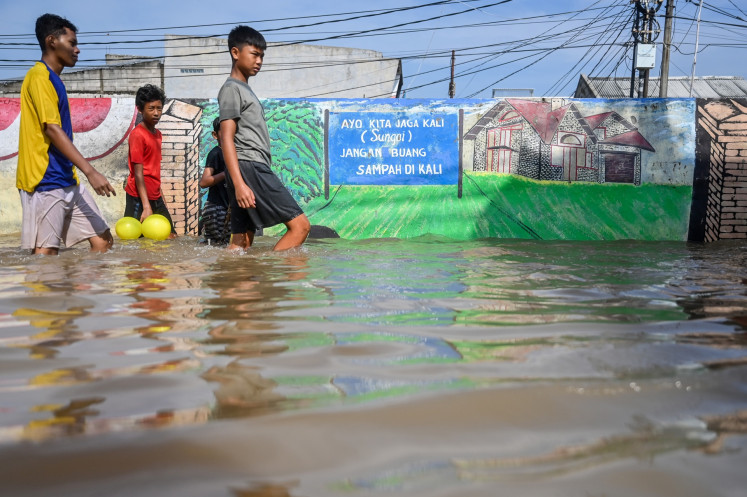Popular Reads
Top Results
Can't find what you're looking for?
View all search resultsPopular Reads
Top Results
Can't find what you're looking for?
View all search resultsIn hot water: The new rules of laundry in the time of COVID-19
Doing your laundry during the coronavirus pandemic could be more complicated than it used be.
Change text size
Gift Premium Articles
to Anyone
Doing your laundry during the coronavirus pandemic could be more complicated than it used to be.
When you leave your house, to buy groceries for example, there is a chance that your clothes could become contaminated with the virus.
SARS-CoV-2, the virus that causes COVID-19, can live up to several hours outside of human body, depending on what kind of surface it lands on.
COVID-19 is spread in tiny droplets ejected from the nose or mouth of an infected person after they cough or sneeze. A single cough can produce up to 3,000 droplets about 1 to 5 micrometers in size – 30 times smaller than the width of a human hair.
A recent study by Neeltje van Doremalen, a virologist at the US National Institutes of Health (NIH), and her colleagues at the Rocky Mountain Laboratories in Hamilton, Montana, on the lifespan on the virus on different surfaces suggested that the virus could survive up to 24 hours on cardboard and 2-3 days on plastic and stainless steel surfaces.
The study also found that the virus could survive and remain infectious while floating in still air for three hours after being coughed.
Read also: How to do online grocery shopping in a time of coronavirus
Therefore, even if you do not touch anything while outside, there is a possibility that you may walk through contaminated air and that the virus may be caught in the fibers of your clothing.
Vincent Munster, head of the virus ecology section at Rocky Mountain Laboratories, however, suggested that the virus may dry up more quickly on absorbent natural fibers. It is thought that the virus will weaken faster on clothes than on hard surfaces.
“We speculate, due to the porous material, it desiccates rapidly and might be stuck to the fibers,” he told BBC.com. No study has determined how long the virus can survive on clothing.
The US Centers for Disease Control and Prevention (CDC) advises that clothes worn outside should be washed immediately with the warmest appropriate water along with good quality detergent, as quoted by the South China Morning Post.
Hot water plus soap is proven to effectively deactivate the deadly virus. And the hotter the water, the better. The CDC says that temperatures above 75 degree Celsius can kill most flu-causing viruses.
You can wash your clothes by machine or by hand. However, make sure that you wash your hands after you handle dirty clothes.
If you do not have the time or resources to wash your clothes immediately, it is advisable to store the clothes in a clean bag or hamper until laundry day. Don’t forget to clean and disinfect the hampers and bags after they are emptied. (gis/wng)










